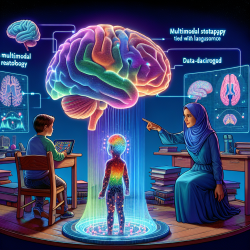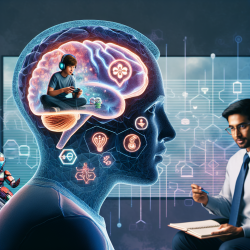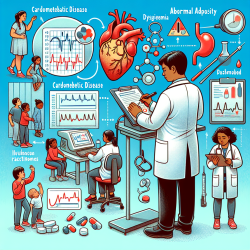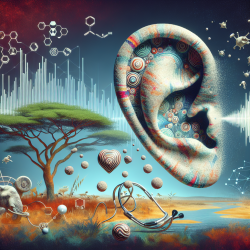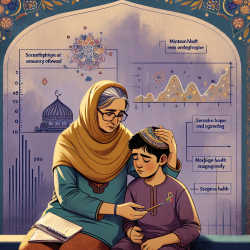Introduction
In the realm of speech-language pathology, the integration of data-driven approaches is crucial for advancing therapeutic techniques and outcomes. A recent study titled "Open multimodal iEEG-fMRI dataset from naturalistic stimulation with a short audiovisual film" offers a rich dataset that can be leveraged to enhance language therapy practices. This blog post explores how practitioners can utilize the findings from this research to improve their skills and encourage further exploration into multimodal data application in therapy settings.
Understanding the Dataset
The dataset in question is a pioneering collection of intracranial electroencephalography (iEEG) and functional magnetic resonance imaging (fMRI) data, gathered from participants engaged in a naturalistic task of watching a short audiovisual film. This multimodal dataset is unique due to its large sample size, the combination of iEEG and fMRI data, and the naturalistic nature of the task, which mirrors real-world cognitive processing more closely than traditional laboratory tasks.
Key Features of the Dataset
- Comprehensive Data Collection: The dataset includes iEEG data from 51 participants and fMRI data from 30 participants, with 18 participants providing both types of data.
- Naturalistic Stimulation: Participants watched a short film, providing a rich context for studying neural mechanisms of language comprehension and multimodal perception.
- Open Access and Detailed Annotations: The dataset is openly accessible, with detailed annotations of speech and video content, facilitating diverse research opportunities.
Implications for Speech-Language Pathology
The integration of iEEG and fMRI data offers unprecedented insights into the neural mechanisms underlying language processing. For speech-language pathologists, this dataset can inform the development of more effective therapeutic interventions by:
- Enhancing Understanding of Neural Mechanisms: By studying the neural responses to naturalistic stimuli, practitioners can gain a deeper understanding of how language is processed in the brain, which can inform therapy techniques.
- Informing Personalized Therapy: The dataset's detailed annotations allow for the exploration of individual differences in language processing, enabling more personalized and targeted therapy approaches.
- Promoting Data-Driven Decisions: Utilizing such comprehensive datasets encourages evidence-based practices, ensuring that therapeutic interventions are grounded in robust scientific data.
Encouraging Further Research
This dataset not only provides immediate applications for therapy but also encourages further research into multimodal data analysis. Practitioners are urged to explore the dataset to uncover novel insights and contribute to the growing body of knowledge in cognitive neuroscience and speech-language pathology.
Conclusion
The "Open multimodal iEEG-fMRI dataset from naturalistic stimulation with a short audiovisual film" represents a significant advancement in the field of cognitive neuroscience and offers valuable opportunities for enhancing language therapy practices. By integrating these data-driven insights into therapeutic approaches, practitioners can improve outcomes for children and contribute to the evolution of speech-language pathology.
To read the original research paper, please follow this link: Open multimodal iEEG-fMRI dataset from naturalistic stimulation with a short audiovisual film.
